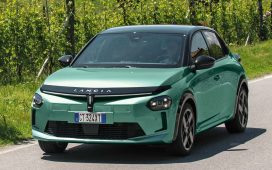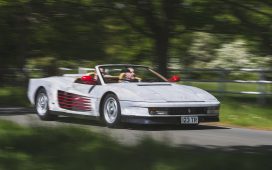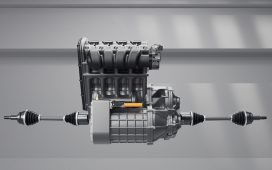- I took two 500-mile mini road trips this year in two different electric SUVs.
- The experiences couldn’t have been more different. One was extremely frustrating.
- Here’s what I learned during my adventures in the Toyota BZ4X and Genesis GV60.
In a regular, gas-powered car, driving several hundred miles over the course of a weekend is no big deal. The most unpleasant parts of such an adventure might wind up being some bad butt cramps and bland gas-station coffee.
In an electric vehicle, though, things aren’t always that simple.
Limited driving range, a lack of charging stations, and longer fill-up times mean that EV road trips are usually a bit more complicated and time-consuming than comparable journeys in gas vehicles. At their worst, EV road trips can be frustratingly long and stressful ordeals.
I took two vastly different 500-mile drives this year in two different electric SUVs and learned how infuriating — or easy — long-haul electric travel can be.
Charging can take a frustratingly long time in the wrong car
The 2023 Toyota bZ4X AWD Limited charging. Tim Levin/Insider
Here’s the lowdown on the two trips I took from New York City. The first, behind the wheel of Toyota’s new BZ4X SUV, took me to Washington, DC. For the second, I went to Cape Cod in the Genesis GV60, a small SUV from Hyundai’s luxury offshoot.
Coincidentally, both round trips totaled around 500 miles, required two charging stops (one on each leg of the journey), plus an additional top-up at each destination. But one experience was vastly more enjoyable, and that mostly comes down to how fast — or excruciatingly slow in the Toyota’s case — each SUV was able to charge up and get me back on the road.
During the DC trip, I stopped for a whopping two hours to charge, turning nine hours of travel time into 11. On the way to and from Cape Cod, I stopped for a much more manageable 47 minutes. That’s longer than a couple of gas stops, but it was still convenient enough.
Why the big gap? Every EV comes with a maximum rate, expressed in kilowatts (kW), at which it can accept power from roadside charging stations. The higher a model’s rating, the quicker it can theoretically recharge its battery — as long as you find a plug with a kW rating that’s equal to or greater than your car’s. (I say “theoretically” because lots of factors, from the outside temperature to the state of the charging station itself, could affect the actual duration of your session.)
The BZ4X Limited AWD that Toyota lent me rates at an unimpressive 100 kW. The higher-tech GV60 maxes out at around 230 kW in my experience. The even bigger snag was that I never observed close to the Toyota’s top rate, leading to some long and boring charging sessions. A Toyota spokesperson said the BZ4X sometimes slows down fast-charging to reduce wear on the battery pack and increase its lifespan.
During my first stop in the Toyota, it refused to pull more than 35 kW, so 37% to 74% — or 95 miles of estimated range — took a full 45 minutes. In DC, 3% to 77% took an hour. On the ride home, the BZ4X maxed out at 50 kW, so charging from 6% to 80% ate up an hour and 15 minutes.
Contrast that with my breezy Genesis experience. First stop: a quick, 12-minute top-up from 49% to 80%. Second stop: 15% to 94% in 35 minutes. Both times I plugged in, the GV60 started sucking in electricity at over 230 kW almost immediately.
It all convinced me that charging speed is way more important than a vehicle’s total range. Although the EPA says these two vehicles can travel similar distances on a full charge (222 miles for the Toyota and 235 miles for the Genesis), one is clearly better suited for long trips. But keep in mind that 100-kW charging plugs are more common than ones that can provide 200 kW and up.
Also remember that the vast and mostly exclusive Tesla Supercharger network means extended drives are simpler for Tesla owners than buyers of other EVs. Tesla drivers can input a destination into their car’s navigation system, and the vehicle will suggest a route that includes pit stops.
Do you love or hate your Tesla or other EV? Never buying an electric car in a million years? I want to hear your thoughts about EVs. Contact me at tlevin@insider.com and share your story!
Cold weather can put the chill on a road trip
The other differentiating factor between these two journeys — aside from the vehicle choice — was the time of year. Cold weather can significantly impact an EV’s range and put a damper on the whole experience.
I left DC on a brisk April morning at about 5 a.m. When I cranked up the heat, the BZ4X’s estimated range dropped from 176 miles to an unsettling 125 miles. Keeping the cabin nice and toasty would have meant an extra charging stop and even more travel time, so instead I bundled up and shivered my way to sunrise. It wasn’t much fun.
Cold temperatures deal a blow to EV range mainly because running the heater consumes lots of energy — energy that then can’t be used for forward motion. In a gas car, the engine gives off heat as a byproduct. Consumer Reports ran tests on several EV models and found that the cold diminishes a car’s range by around 25%.
The Cape Cod trip was in July, so I used the air conditioner a bit. That didn’t draw much power at all, but did knock the range displayed in the Genesis’s screen by a few miles.
Don’t write off slow charging
It’s not all about fast charging. I learned charging slowly while you’re parked can make EV road trips more seamless.
I arrived in Washington, DC with a 6% charge remaining, so I knew I needed to charge up before hitting the road back to New York. Although slow (also known as Level 2) charging plugs are becoming more common in apartment complexes, the one I visited in DC didn’t have one. So I drove the BZ4X to a fast-charging station the following morning and left the car plugged in for an hour while sightseeing. It wasn’t the worst inconvenience in the world, but vacations are supposed to be about enjoying yourself — not the logistics of keeping your car from dying.
In Cape Cod, I stayed with friends who had a garage — and more importantly, a power outlet in that garage.
I left the GV60 plugged in for hours at a time, and over the course of the weekend it recharged from 20% to 65%. Regular household outlets only provide a trickle of electricity, so EV owners can’t rely on them exclusively. Still, the low-voltage plug gave the SUV enough juice to eliminate a charging detour and hit the road home with a solid charge.
In the past, drivers never had to think all that hard about how their choice of vehicle, ambient temperature, or access to electrical plugs might affect a vacation. But it’s a whole new world out there. And the best way to learn the ropes is to try things out for yourself.
Do you love or hate your Tesla or other EV? Never buying to an electric car in a million years? I want to hear your thoughts about EVs. Contact me at tlevin@insider.com and share your story!
NOW WATCH: Popular Videos from Insider Inc.
Loading…










